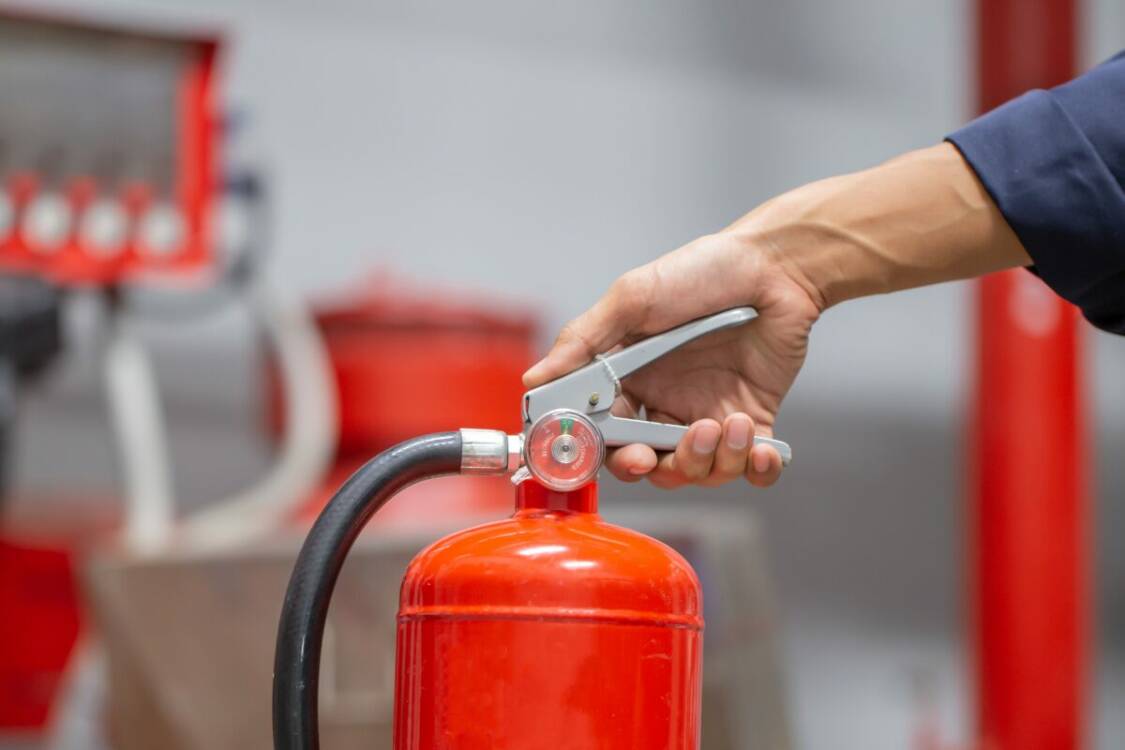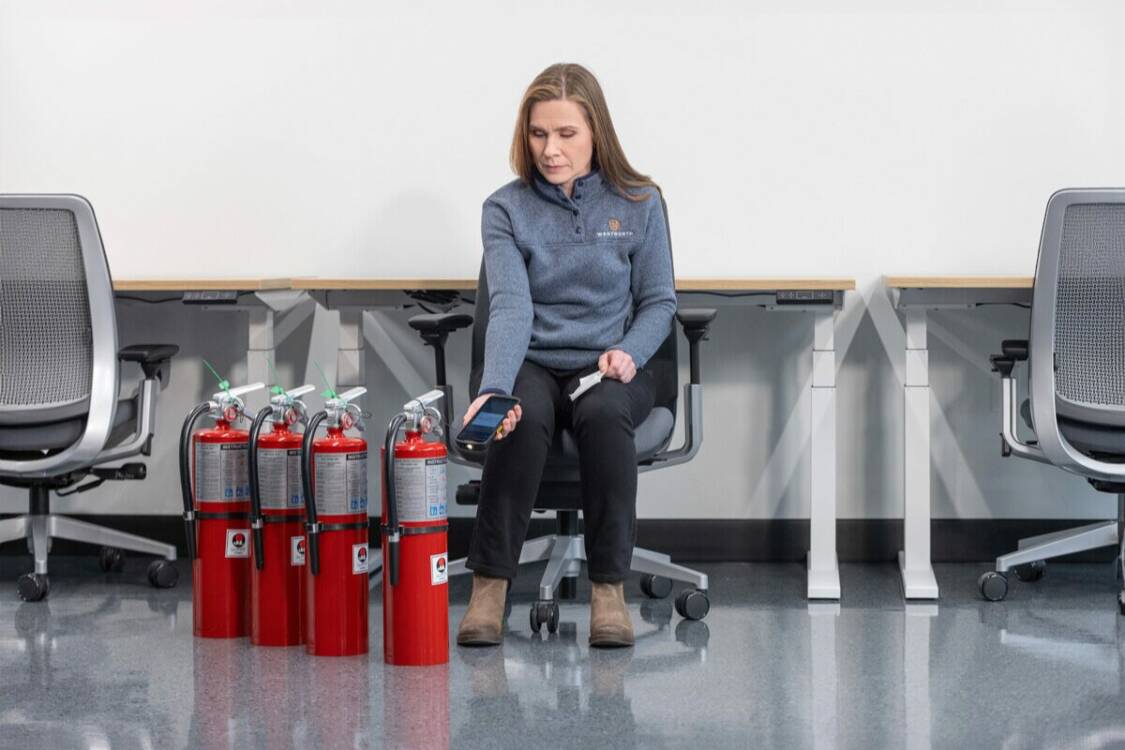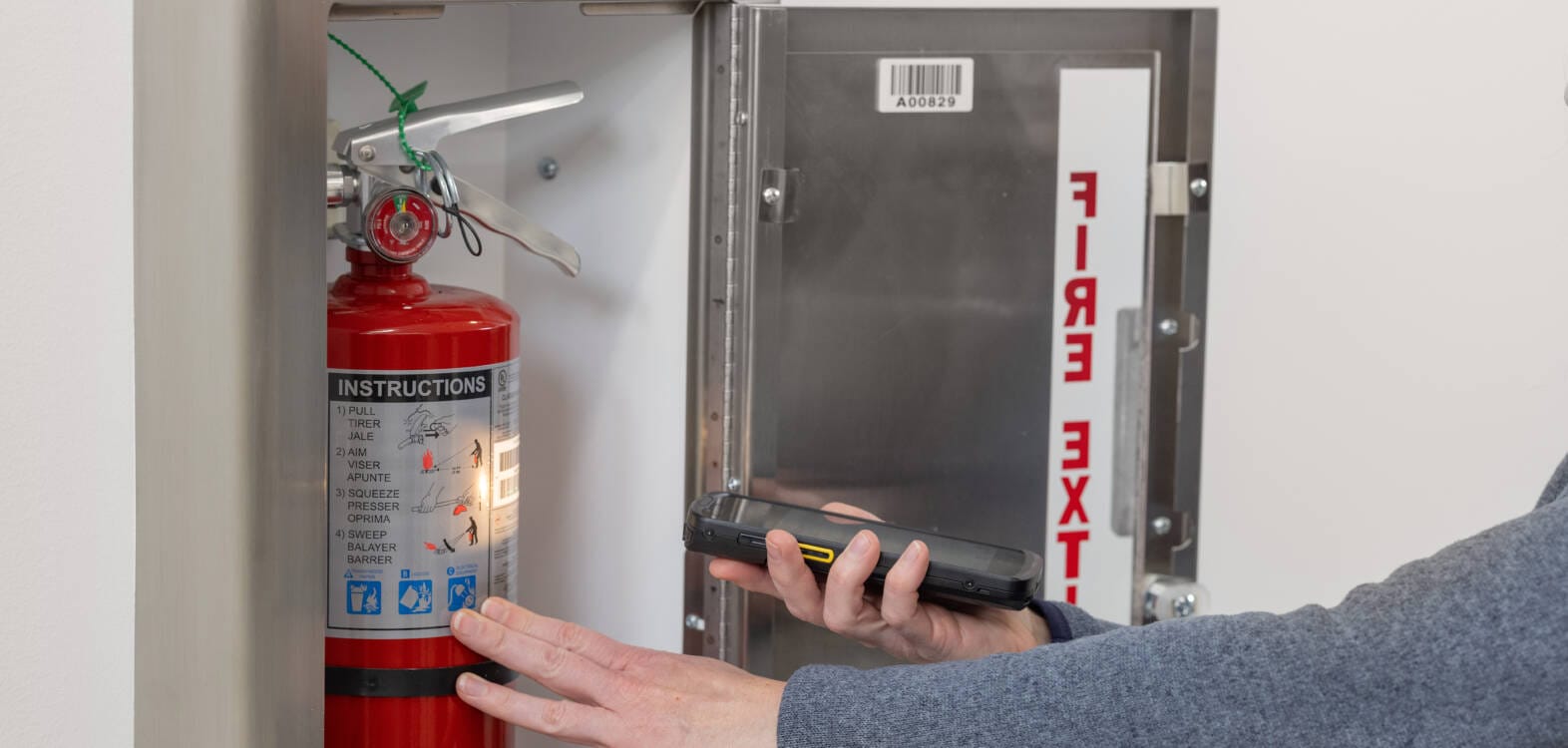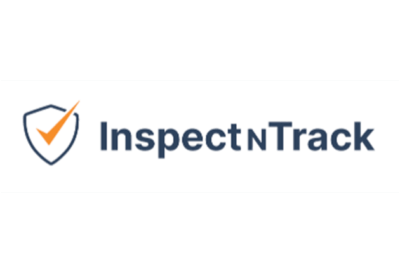This article offers a concise introduction to NFPA 10, the standard that outlines requirements for the inspection, testing, and maintenance of portable fire extinguishers.
Interested in learning more about NFPA 10 and its guidance on fire extinguisher care? You’re in the right place.
Fire extinguishers are among the most common pieces of fire safety equipment, yet many people are unfamiliar with the proper steps to maintain them. NFPA 10 serves as a key reference for ensuring that extinguishers remain reliable and ready for use.
In the sections ahead, we’ll take a closer look at what this standard covers and why it plays such an important role in workplace safety.
What is the NFPA?
The National Fire Protection Association or NFPA is a worldwide nonprofit organization that focuses on minimizing the negative effects of fire and electrical hazards. This organization was founded in 1896 and has spent more than a century promoting research, training, education, and outreach regarding fire safety.
While the NFPA is known for many things, they are most recognizable for establishing more than 300 safety codes for fire safety. The NFPA doesn’t have any legal power to enforce their standards, however, many industry professionals view them as a leader for their best practices, and therefore choose to follow their established guidelines.
What does NFPA 10 Regulate?
NFPA 10 is a fire safety standard established by the National Fire Protection Association that focuses on regulations for portable fire extinguishers.
This fire extinguisher code provides technicians with the necessary information to properly perform inspection, testing, and maintenance (ITM) on fire extinguishers. Additionally, it dives into topics such as the selection, installation, and recharging of portable fire extinguishers.
NFPA 10 is a resource for inspectors, managers, and safety professionals alike, as it can help with performing duties and maintaining a safe environment.

- What is the NFPA?
- What does NFPA 10 Regulate?
- Main Points from NFPA’s Fire Extinguisher Code
- Why Does Compliance With NFPA 10 Matter?
- How Software Can Support Compliance
- Key Takeaways
- Scan, Track, and Stay Ahead
- Conclusion
- Other Helpful Articles
- Want to learn more about InspectNTrack?
- Navigation
- Quick Links


Main Points from NFPA’s Fire Extinguisher Code
It can be intimidating to try and digest all the information that is included in the NFPA 10 Portable Fire Extinguishers standard. To help, we have broken down the information into 6 main topics below. Reviewing these sections should leave you with a pretty good idea of the content in NFPA 10.
1. Fire Extinguisher Classifications
Fire extinguishers are identified by the type of fire that they are designed to suppress. NFPA 10 provides a breakdown of the various types of fire extinguishers and when they are meant to be used.
There are 5 fire extinguisher classifications to know:
- Class A: Meant for fires that involve ordinary combustibles like wood, paper, and cloth.
- Class B: Meant for fires that involve flammable liquids, such as gasoline, oil, and grease.
- Class C: Meant for fires that involve energized electrical equipment.
- Class D: Meant for fires that involve combustible metals, such as magnesium and titanium.
- Class K: Meant for fires that involve cooking oils and fats, typically in commercial kitchens.
Familiarity with these fire extinguisher classifications can help building owners select the best type of fire extinguisher to include on their premises. It is also vital information for technicians and inspectors, since the maintenance requirements can be slightly different depending on the fire extinguisher type.
2. Fire Extinguisher Placement and Distribution
Fire extinguishers need to be easily accessible during emergencies. NFPA 10 provides guidelines for where to position fire extinguishers, so that they can be quickly found and utilized during critical situations.
Some of the main points regarding the placement/distribution of portable fire extinguishers include:
- Accessibility: The safety standard states that fire extinguishers in commercial or industrial settings should be no more than 75 feet away. This way, any individual could reach them in a reasonable amount of time.
- Mounting Height: For fire extinguishers that are under 40 lbs, the handle should not be more than 5 ft from the ground. Extinguishers that are more than 40 lbs should be even closer, measuring no more than 3.5 ft from the ground.
- Visibility: As with other forms of fire and life safety equipment, it is expected for fire extinguishers to be installed where they will be easily visible to any person who may need them. This includes making sure that the view of fire extinguishers is unobstructed by other things in the environment.
- Hazard Type: Fire extinguisher classifications should be used to place the most suitable type of extinguisher in a specific area. For example, a Class K extinguisher should be placed near a commercial kitchen, as it is the best fit to aid in situations involving grease and oil fires.
These points of consideration help ensure that fire extinguishers are placed in the ideal location to be found and used properly.
3. Inspection and Maintenance Requirements
NFPA 10 provides a blueprint for how and when to inspect, test, and maintain portable fire extinguishers. Here are the basics you need to know:
Regular Visual Inspections: As per NFPA 10(10), Sec. 7.2. , visual inspections should be performed during installation and at least once every 30 days (basically monthly) after that. The purpose of these inspections is to take a quick glance at extinguishers and verify that everything is in order.
Generally, it is advised to check for a number of things including:
- Extinguishers are in their designated locations and properly mounted.
- There are no obstructions to visibility/access.
- The container has adequate pressure (between 185 – 195 PSI).
- The fire extinguisher is full – confirmed by weighing or lifting.
- Exterior is free of any damage – corrosion, leakage, clogged nozzle.
- No missing or broken safety seals.
- Operating instructions are intact and legible.
Annual Maintenance: NFPA 10(10), Sec. 7.3 outlines that at least once a year, a detailed check of fire extinguishers should be performed by a qualified technician, including testing seals, operating mechanisms, and pressure levels.
While regular maintenance efforts can be made by facility staff, this one requires speciality tools and training, meaning that it often has to be hired out to a professional.
Hydrostatic Testing: Hydrostatic testing is a form of fire extinguisher care that involves testing the extinguisher to verify its strength against rupture (NFPA 10(10) ch. 8). Similar to the yearly maintenance, this testing must be performed by a specialized technician with the equipment and skills to perform the test.
Additionally, it is important to note that the frequency of hydrostatic testing is determined by the fire extinguisher type, ranging from every 5-12 years.
Note: There are additional requirements or forms of maintenance that should be done for fire extinguishers, however, this is a more broad overview of the most applicable information.
4. Employee Training
In accordance with NFPA 10, all employees with access to portable fire extinguishers must receive training on their purpose, use, and maintenance. Properly trained employees should be able to identify the different fire extinguisher classifications, understand when to use them, and be able to correctly initiate their use.
Training should be given upon employment as well as annually to refresh the information. Not sure what to include in your training? We recommend including the following in your training content:
- Identification of the different fire classes (A, B,C,D, and K)
- Practicing selecting the right extinguisher for the situation
- Demonstrating proper technique with the PASS method (Pull, Aim, Squeeze, Sweep)
- Examples of safe evacuation and fire suppression techniques
- Demonstrating how to perform a monthly visual inspection
- Instructions for how to document any ITM efforts
While training may feel cumbersome to put together and keep up with, effective training sessions help ensure staff are prepared to perform their roles and can respond quickly during an emergency.
Note: Be sure to document any training received by employees and add it to your records.
5. Record Keeping and Compliance
The NFPA fire extinguisher code mandates that you keep detailed records to track inspections, maintenance, and testing (ITM). Thorough documentation is important, because it can be used to maintain an inspection/maintenance schedule, support OSHA compliance efforts, and provide a clear audit trail for liability and insurance purposes.
Information that is recommended to have recorded for each extinguisher includes:
- Type of extinguisher (ABC, CO2, K-type, etc.)
- Manufacture date of the extinguisher
- Last date maintenance was performed and by whom
- Last date the extinguisher was recharged and by whom
- Date of most recent maintenance (e.g. annual or 6-year, etc.) was performed and by whom
- Date of most recent hydrostatic testing and by whom
Records should be complete and organized, so that they can easily be retrieved for an audit or other purposes.
6. Special Considerations for Different Occupancies
Some industries and building types have specialized hazards or fire safety needs. As a result, the type and volume of fire extinguishers placed in these locations matters.
NFPA 10 requires factors such as the area size and potential risks to be taken into consideration, so that the appropriate extinguishers can be incorporated. Here are some examples of buildings that would require special considerations:
- Healthcare Facilities: Due to the nature of healthcare facilities, it is best for there to be an increased number of fire extinguishers close to patient areas or oxygen storage.
- Commercial Kitchens: Large cooking areas are more susceptible to risks related to grease fires. Because of this, it is recommended that there be an emphasis on Class K fire extinguishers in or near commercial kitchens.
- Industrial Sites: High risk environments such as industrial sites often require specialized hazardous materials.

Why Does Compliance With NFPA 10 Matter?
When it comes to NFPA standards, compliance is completely voluntary. The NFPA doesn’t have any legal power to enforce their standards. However, other organizations with legal authority, such as the Occupational Health and Safety Association, often base their regulations off of NFPA standards. For example, OSHA 1910.157 is a regulation that includes similar guidelines to NFPA 10, regarding the upkeep of fire extinguishers.
Because OSHA is a government agency, it does have the power to issue fines for violations of their standards, many of which can be very costly. Therefore, it is beneficial for you to be both familiar with and compliant to NFPA and OSHA standards.
Not only does compliance help with avoiding fines, it also helps with maximizing the longevity of equipment, reducing the need for replacement equipment, lowering the risk of a safety incident, and much more.
How Software Can Support Compliance
Software is one of the best tools for supporting compliance efforts with NFPA and OSHA standards. Not only can it significantly decrease the time needed to perform inspections/maintenance, it can also greatly improve compliance, team communication, record keeping, and much more. Because of these benefits, we want to share a little bit about our software solution and how it can aid in the care for portable fire extinguishers.
There are a wide range of options for software on the market, however, InspectNTrack software has been specifically designed for fire extinguishers and other fire-related equipment. This makes it an ideal resource. Here are some of the primary ways that InspectNTrack can aid your compliance efforts:
- Streamlining Inspections with Software: InspectNTrack software simplifies inspections and maintenance by providing a step-by-step walkthrough of inspections for fire extinguishers. These checklists ensure that every element of the system is inspected and tested per regulatory guidelines, which makes the process seamless and standardized.
- Automating Maintenance Schedules and Reminders: Inspection software can automate maintenance schedules by setting reminders for monthly visual inspections, annual maintenance, and replacements. With this automation, facility managers never miss an inspection deadline, ensuring ongoing compliance with OSHA and NFPA standards.
- Tracking and Reporting Compliance: Inspection software provides a central database to store records of inspections, maintenance, and repairs. This makes it easy to generate reports and retrieve data during audits. If issues arise, the software can log them and help ensure that corrective actions are completed in a timely manner.
- Real-Time Updates and Notifications: For larger buildings or multiple facilities, inspection software provides real-time updates on the status of fire extinguishers. Notifications about equipment locations, failures, or needed repairs are sent instantly to the responsible parties, ensuring quick action. With this real-time visibility, facility managers can stay on top of any issues that could impact safety or compliance.
When it comes to safety inspections and compliance, InspectNTrack is changing the game. To learn more about our software and product features, talk to a specialist here.
Key Takeaways
- NFPA 10 sets the standards for portable fire extinguishers, including installation, inspections, testing, maintenance, and use.
- Fire extinguishers should be chosen based on the specific fire hazards present in each environment.
- Regular inspections/maintenance are necessary to prolong the life span of fire extinguishers and ensure that they remain ready for use.
- Non-compliance with NFPA 10 can result in large fines, legal consequences, insurance issues, and increased risk of fire incident.
- Software can simplify inspection and maintenance tasks, making NFPA 10 compliance that much easier.

Conclusion
NFPA 10: Standard for Portable Fire Extinguishers, is a safety standard created by the National Fire Protection Association that outlines specific guidelines for the selection, installation, inspection, maintenance, and testing of portable fire extinguishers. This article highlights the main points from this fire extinguisher code and even highlights how software can aid you in your efforts to take care of your fire extinguishers. Whether you use software in your inspections or not, hopefully this article helps you feel knowledgeable about the basics of NFPA 10 and capable of fulfilling your role.


